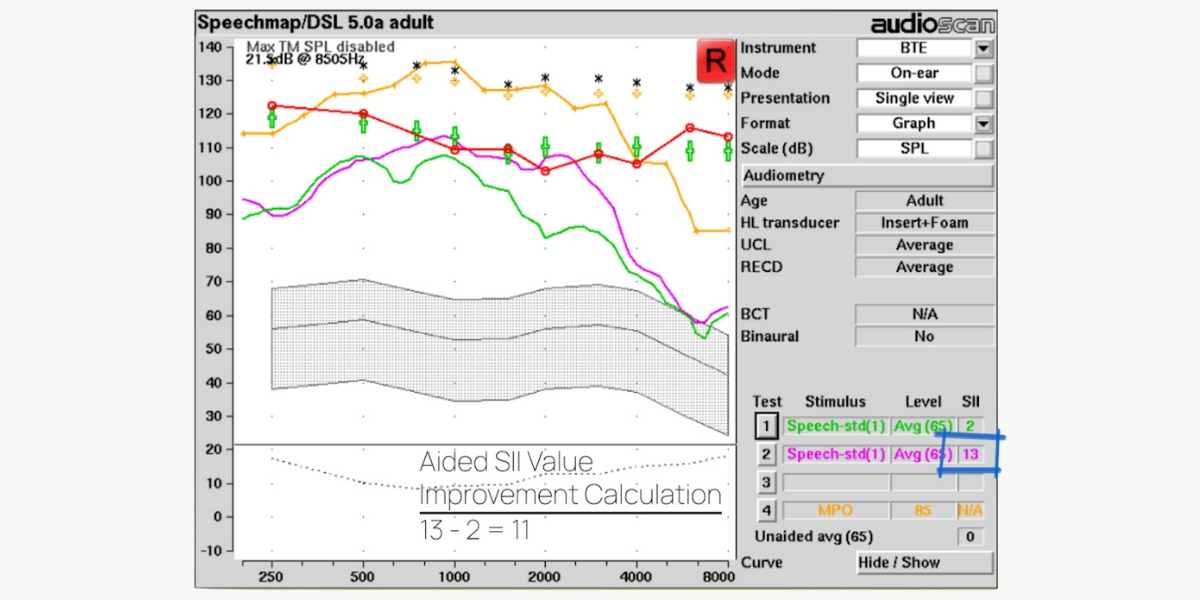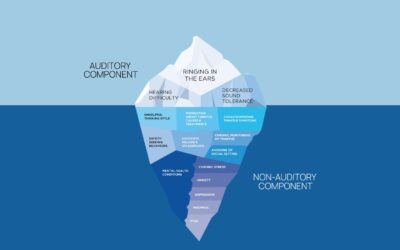As hearing care professionals, we strive to equip our clients with the tools they need to communicate optimally, and one aspect of this involves evaluating their ability to understand speech in various listening situations. The Speech Intelligibility Index, or SII, offers an objective measure in this regard. It provides a quantitative estimate of the amount of spoken information likely audible to a client. This can be measured as unaided, or aided with a hearing aid.
Understanding the SII
The SII can be visualized as a tool for analyzing the “puzzle” of speech. Each piece within this puzzle represents a sound at a specific frequency. The SII factors in two key elements:
- Pure Tone Hearing Thresholds: The faintest sounds detectable by the client at different frequencies.
- Speech Spectrum: The distribution of energy across various frequencies for spoken language.
By comparing these thresholds with the typical speech spectrum, the SII generates a score ranging from 0.0 to 1.0, expressed as a proportion, or 0 to 100, expressed as a percentage:
- 0.0 or 0: No speech information is audible.
- 1.0 or 100: All speech information is audible.
Benefits of Utilizing the SII During Verification
The SII goes beyond the binary results of the audiogram and provides a more granular picture of an individual’s listening challenges:
- Predicting Speech Intelligibility: A higher SII score suggests a greater likelihood of understanding speech in quiet environments. Conversely, a lower score indicates potential difficulties, especially in noisy settings.
- Evaluating Hearing Aid Benefit: The SII can be used to assess how effectively hearing aids amplify speech sounds. By improving the SII score, hearing aids can enhance speech comprehension. To calculate improvement in SII, subtract the unaided SII score from the aided SII score.
- Counseling Tool: The SII score serves as a valuable discussion point during consultations and hearing aid demonstrations. It facilitates explaining the impact of hearing loss on a client’s daily listening experiences
Limitations of the SII
While the SII is a valuable tool, it’s important to acknowledge its limitations:
- Focus on Audibility: It primarily assesses audibility, not how well the brain processes and interprets the available speech information.
- Idealized Conditions: The SII calculation assumes a perfect listening environment with a single talker and minimal background noise. Real-world listening is often more complex.
- Speech Material Dependence: The intelligibility of different speech materials (sentences, words, numbers) can vary.
A Holistic Approach to Hearing Care
The SII is a useful tool, but it’s only one aspect of a comprehensive hearing evaluation. Other important considerations include:
- Person-Centered Approach: Discussing the specific situations where a patient struggles to hear allows for tailored solutions.
- Speech-in-Noise Testing: This assesses real-world listening challenges by measuring a patient’s ability to understand speech in background noise.
- Additional Factors: Age, cognitive function, and even emotional state can influence listening ability.
By combining the SII with other assessments and patient input, we can craft a personalized hearing care plan. This might involve hearing aids, aural rehabilitation training to enhance listening skills, or communication strategies to navigate challenging listening environments. If you want to learn more, audiologist Clayton Fisher’s micro course explores 5 case studies with real ear measurements where SII is in focus. You can sign up to Learn On for free access to this course free and other free CEUs here.
Reference
Taghavi SMR, Mohammadkhani G, Jalilvand H. Speech Intelligibility Index: A Literature Review. Aud Vestib Res. 2022;31(3):148-157.





